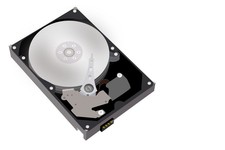
09/01/2019
Heat-Assisted and Microwave-Assisted Magnetic Recording (HAMR and MAMR) technologies promise capacity of hard disk drives (HDD) in tens of TB
The best hard disk drives on the market have capacity around 16TB, this is close to the limit of currently used technology. Further increase of the capacity via shrinking of bit size requires use of high-coercivity materials that are more difficult to switch (i.e. write the information). Additional energy must be locally supplied to facilitate the switching. Currently 2 competing technologies are being developed to achieve this:
HAMR - Heat-Assisted Magnetic Recording (Seagate company)
MAMR - Microwave-Assisted Magnetic Recording (Western Digital and also Toshiba companies)
While the idea behind both technologies is here for some time and known to experts in magnetic recording and tech geeks, a recent article in IEEE spectrum rather nicely illustrate these technologies also to wider audience:
Aside from decreasing the bit size there are other tricks to increase the HDD capacity, while keeping the same dimensions of the casing. In fact there could be not just one "disk" inside but several "disks" so-called platters. Changing aluminium support part for glass or other material allows for thinner platters and more of them can fit inside (currently up to 9 platters for 3.5" HDD). The highest capacity HDDs nowadays are sealed with helium, but there are ideas for using vacuum inside, this can enable even close spacing between platters and enhance capacity. These and other ideas were discussed at Magnetic Recording Conference 2018 (TMRC2018) and summarized in article "HAMR, MAMR, Vacuum And Thinner Disks Drive HDD Densities" by .






